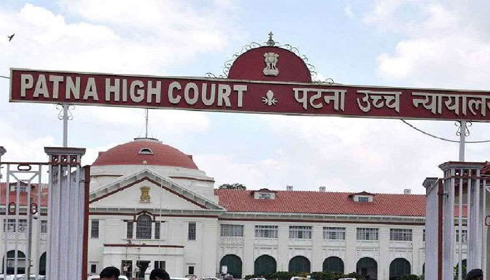
Patna HC Acquits Gynecologist in Kidney Mystery Case
A high-stakes judicial saga that began with a frightening medical concern in 2000 has finally ended. The Patna High Court rejected criminal proceedings against Dr Mamta Sinha, a gynaecologist suspected of involvement in the alleged unauthorised removal of a patient's kidney during surgery. The court's decision not only provides relief to the accused, but it also raises significant concerns about the confluence of medical ethics, diagnostic constraints, and legal scrutiny in India's healthcare system.
Satish Kumar, a mailman with the Railway Mail Service, complained of acute abdominal pain and strange urine discharge in June 2000. An ultrasound at a government clinic revealed modest liver oedema but no renal abnormalities. He was eventually transferred to Dr. Shailesh Kumar Sinha, a urologist, who diagnosed him with chyluria, a disorder in which lymphatic fluid leaks into urine, causing it to appear milky.
Kumar underwent surgery on September 13, 2000. His recovery was far from simple. Persistent discomfort prompted more imaging over the next three years. In 2003, a scan showed that his right kidney was "not visible". This raised suspicions that it had been removed during the operation, maybe without authorisation. Kumar filed a complaint against Dr Sinha, his wife Dr Mamta Sinha, two helpers, and an anaesthesiologist.
Dr Mamta Sinha, who has a diploma in obstetrics and gynaecology, was charged largely with being present in the operating room, which her attorney contended was unrelated to the urological treatment done.
The matter went through several forums, including local courts, the State Consumer Disputes Redressal Commission (SCDRC), and the National Consumer Disputes Redressal Commission (NCDRC), all of which denied the doctors' complaints. A comprehensive report from Chandigarh's Postgraduate Institute of Medical Education and Research (PGIMER) marked a watershed moment.
A medical board chaired by nephrologist Dr K.L. Gupta evaluated Kumar with advanced testing such as CT angiography, cystoscopy, and retrograde pyelography. The examinations revealed a severely atrophied (shrunken) right kidney, not a surgically excised one. The ureter (the tube linking the kidney to the bladder) and its internal structure remained intact, indicating that the kidney had not been physically removed.
In layman's words, an atrophied kidney is one that has lost function over time owing to a lack of blood flow, infection, or disease—not from surgery. Dr Gupta's team discovered a little artery still attached to the place where the kidney should be, supporting the theory that the organ declined spontaneously. This contradicts the idea that the kidney was purposely removed.
Justice Chandra Shekhar Jha of the Patna High Court, citing relevant Supreme Court rulings, determined that the allegations against Dr Mamta Sinha lacked foundation. The court emphasised that the only charge against her was her presence in the operating room, which did not constitute active involvement in the procedure or conspiracy.
The Court emphasised that for criminal accusations, particularly serious ones such as causing grievous harm (Section 326 IPC) or attempting to kill (Section 307 IPC), evidence must show direct involvement or gross negligence. In this case, there was no evidence to support either claim.
This case highlights a broader issue in India's healthcare system: a lack of patient information about medical procedures, as well as a hazy distinction between medical difficulties and claimed wrongdoing. Chyluria is rare yet treatable. Its symptoms can mirror more serious illnesses, and while complications such as kidney atrophy are sad, they can occur even without medical negligence.
The episode also emphasises the importance of improved diagnostic techniques and unbiased expert panels for resolving medical disagreements. If the PGIMER panel had not intervened, the matter could have carried on for much longer, causing distress for both the patient and the accused doctor.
Dr Mamta Sinha has faced legal scrutiny for more than two decades for what appears to be a misguided complaint. While the judiciary eventually cleared her, the psychological cost of facing criminal charges for 25 years is enormous.
Satish Kumar, for example, is still dealing with medical issues that could have been caused by illness progression rather than surgical error. His journey exemplifies the anguish that many Indian patients face when navigating a healthcare system where miscommunication and distrust may quickly escalate into litigation.